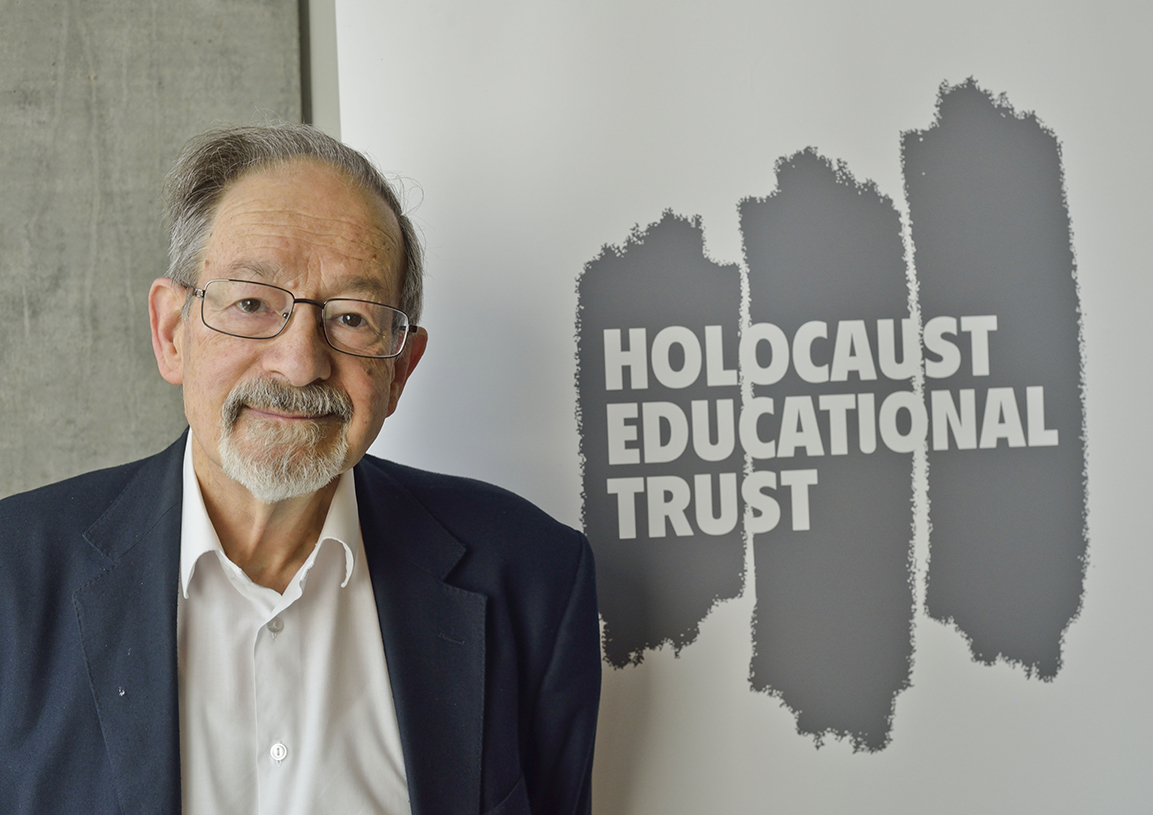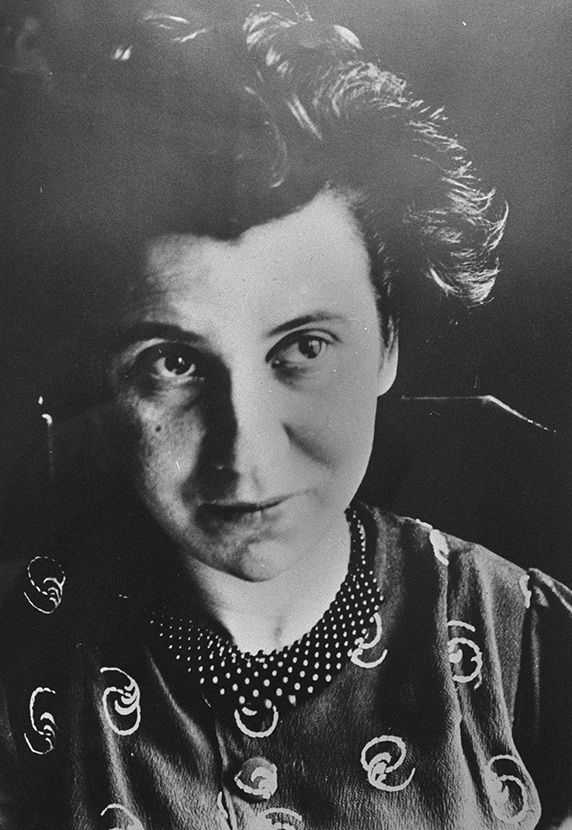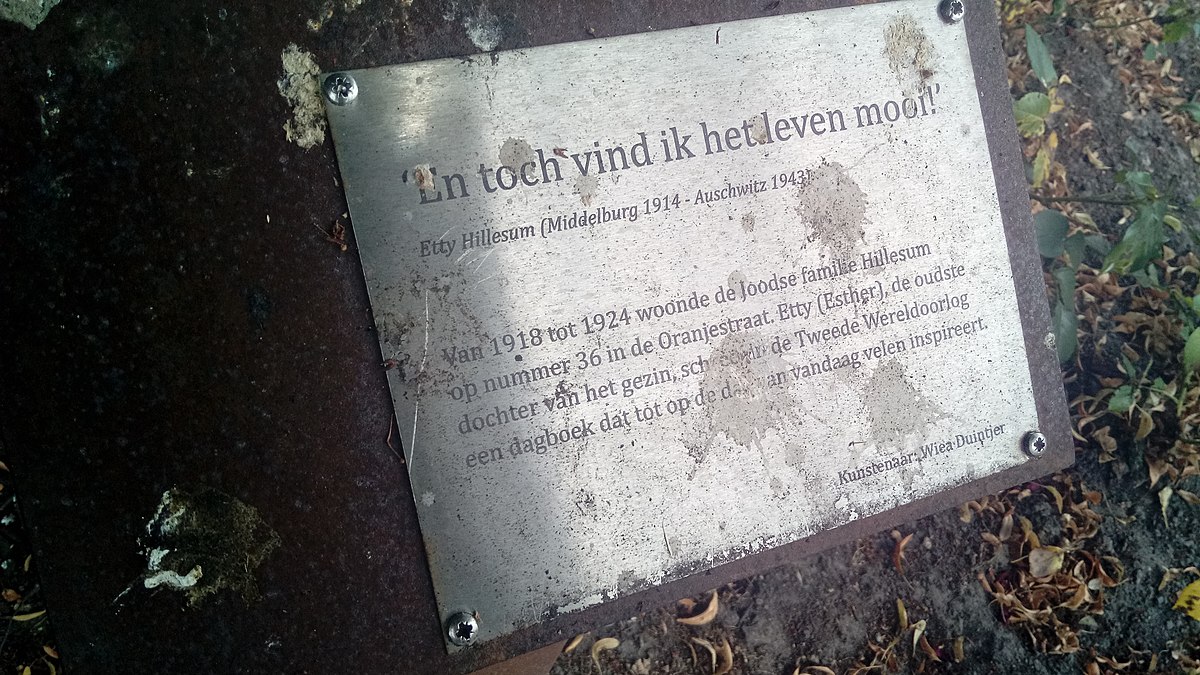As Ambassadors we know that the Holocaust took place in many different ways across Europe, this is what makes it so complex. For this edition of the Ambassador Newsletter, we chose to undertake some more research into the experience of the Dutch Jewish community, particularly focusing on the deportations
 Yellow star inscribed with “Jood” (Dutch for Jew). Picture by: The Magnes Collection of Jewish Art and Life - Creative Commons Attribution 2.0 Generic license
Yellow star inscribed with “Jood” (Dutch for Jew). Picture by: The Magnes Collection of Jewish Art and Life - Creative Commons Attribution 2.0 Generic license
At the time of the Nazi invasion of the Netherlands, the Dutch Jewish community numbered around 140,000 people. Measures against Jews began to be enacted shortly after the invasion. Holocaust survivor Louise Lawrence-Israëls was a young child in Amsterdam when these measures against Jews began. She spoke of how “Jewish children couldn’t go to a public school. Using public transportation was forbidden. Every Jew 6 and older was ordered to wear a yellow star”. I found Louise’s testimony so powerful. Not only does it show us the realities faced by Dutch Jews living under Nazi occupation, but it is especially harrowing when you realise it comes from the perspective of a child, who is seeing this all unfold in front of her.
The first to be sent to transit camps (camps where prisoners were briefly detained before being deported to other camps) were Jewish refugees who had fled Germany after Hitler came to power. Dutch Jews were instead initially concentrated in Amsterdam. The geography of the Netherlands made it difficult to escape, so around 25,000 Jews went into hiding, around one third of these people were later found and deported. In July 1942, Jews in Amsterdam were ordered to report to central offices to be processed and taken to Westerbork transit camp. These orders continued from October 1942 to March 1943; and from September 1943 to the end of the war.
 Survivor Martin Stern MBE
Survivor Martin Stern MBE
Holocaust survivor Martin Stern MBE stayed with friends of his parents (who passed him off as their son) after the death of his mother from an infection in 1942. In the spring of 1944, Martin was arrested in his nursery school and sent to Westerbork alone, aged just 6 years old. The things he experienced at Westerbork and later at Theresienstadt Ghetto and concentration camp were truly terrible, and his candid testimony of his early years really sheds light on the brutality of the Holocaust. You can hear his full testimony here.
Following deportation, many Dutch Jews were sent to transit camps, the most well-known of which was Westerbork. Originally a refugee camp for Jews escaping Nazi Germany, in the summer of 1942 it came under Nazi control and began to function as a transit camp for Jews being sent on to eastern Europe. Etty Hillesum was a Jewish prisoner who wrote about her time in Westerbork in her diary. She detailed how “In Westerbork it was if I stood before the bare palisade of life. Life’s innermost framework stripped of all outer trappings”. Etty was transported to Auschwitz where she died in November 1943. Etty’s words help us to understand the daily hardships and difficulties faced by those in the transit camps and the unknowns that each day brought. You can read more about Etty’s diary in the reviews section of this edition of the newsletter.
 A photograph of Etty Hillesum
A photograph of Etty Hillesum
 Memorial for Etty Hillesum in Winschoten, Oldambt. Picture by: Donald Trung Quoc Don (Chữ Hán: 徵國單) - Wikimedia Commons
Memorial for Etty Hillesum in Winschoten, Oldambt. Picture by: Donald Trung Quoc Don (Chữ Hán: 徵國單) - Wikimedia Commons
 Monument in Westerbork: each stone represents a person that passed through the camp and died during the Holocaust. Picture by: Bert Kaufmann- Creative Commons Attribution 2.0 Generic license
Monument in Westerbork: each stone represents a person that passed through the camp and died during the Holocaust. Picture by: Bert Kaufmann- Creative Commons Attribution 2.0 Generic license
The first deportations from Westerbork took place on 15th July 1942, when 1,135 Dutch Jews were sent to Auschwitz-Birkenau. By the end of July, over 6,000 had been sent East. This was only the beginning. In November railways were constructed that ran directly into Westerbork to facilitate deportations not just to Auschwitz-Birkenau, but to Bergen-Belsen, Theresienstadt, Vittel, and Sobibor. More than 103,000 Jews were deported to Auschwitz-Birkenau from Westerbork, and only 5,000 survived. By February 1943, trains were leaving Westerbork every Tuesday. Dr. Joseph Melkman, a Jewish teacher who was interned at Westerbork, testified about the deportation process at the Eichmann Trial: “From all the terrible things I saw...my strongest recollection, and that of others, is from that night, 3 AM Tuesday morning, in the total silence and darkness, when they read, as though they were meting out the death penalty to those who were being deported”.
The establishment of measures to persecute Dutch Jews occurred at a very fast pace, leading to mass deportations beginning in 1942. Many of these people were completely unaware of where they were being transported to and what the future would hold for them. It is so important for us to learn this through first-hand testimony of survivors. Each individual’s experience differed and we must remember that each person murdered had their own life, identity and story to tell.